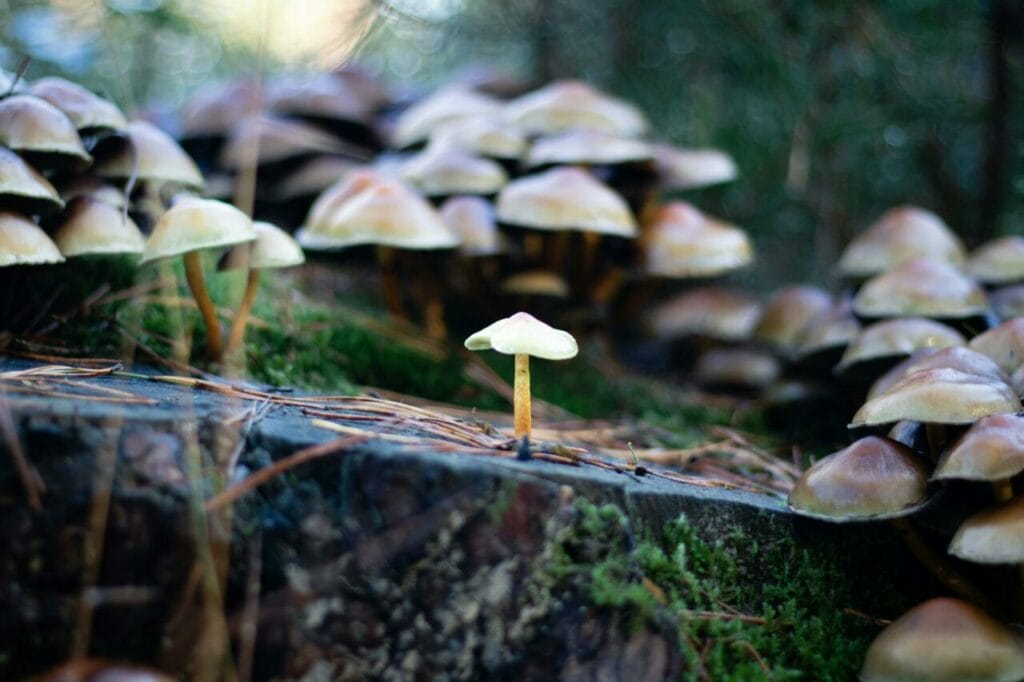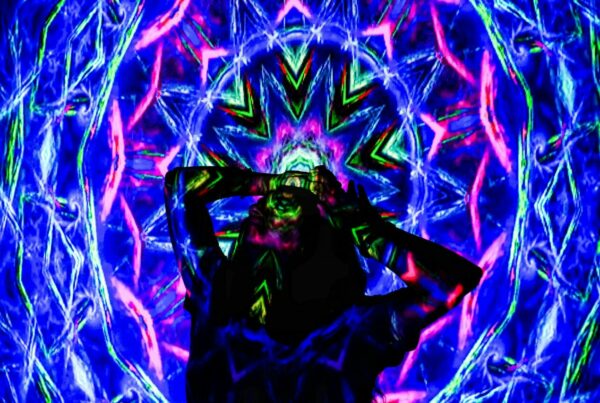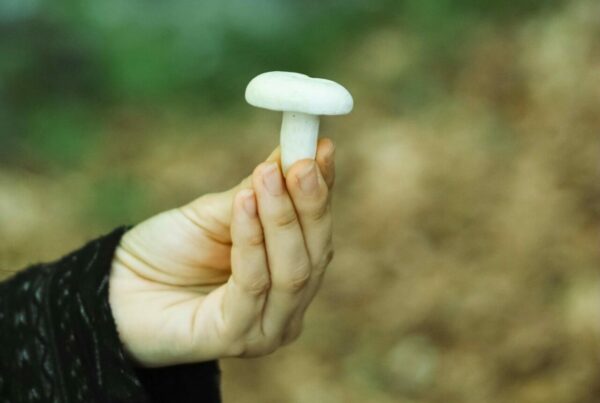Alzheimer’s Disease (AD), a crippling neurodegenerative condition, currently has no known cure. Its escalating prevalence presents a significant problem. Consequently, scientists are investigating better treatment methods, focusing on both natural and artificial alternatives.
Several medical trials have highlighted the promising potential of serotonergic psychedelics, such as LSD, DMT, and psilocybin, in the treatment of Alzheimer’s disease. For more intriguing information, delve into online resources or consider “purchasing psychedelics online in Canada.”
[toc]
The Function of Psychedelics in Alzheimer’s Treatment
Conventional psychedelics seem to hold promise in treating early-stage Alzheimer’s Disease (AD) or mild cognitive impairment (MCI) by encouraging brain cell growth.
Psychedelics might foster neural adaptability for learning and memory by targeting certain brain receptors. This could potentially slow down, or even reverse, the neurodegenerative effects of AD. Additionally, psychedelics may relieve depression and anxiety, frequently seen in AD patients, by eliciting positive psychological responses.
There are lingering questions about how psychedelic treatments work. Some suggest that profound experiences from high-dose psychedelics, like mystical sensations or a sense of self-dissolution, are vital for reaping psychological benefits. Others argue that the key lies within the biological changes these substances induce. Both viewpoints may have some merit.
Conventional psychedelics seem to aid the brain in adapting and reducing inflammation, even at lower dosages. Therefore, low-dose treatments may help conditions like brain degeneration or migraines without significant mind-altering effects. However, for conditions like depression, anxiety, or addiction, the mind-altering effects seem essential, facilitating introspection and behavioural modifications. Thus, both low and high doses deserve investigation for personalized therapy.
The Impacts of Serotonergic Psychedelics
Serotonergic psychedelics, encompassing LSD (lysergic acid diethylamide), DMT (dimethyltryptamine), and psilocybin (found in magic mushrooms), are garnering
The potential therapeutic impacts of psychedelics on diverse mental health disorders are generating growing interest.
In Alzheimer’s Disease (AD) research, serotonin receptors, applauded for their cognition-enhancing and neuroplasticity-modulating abilities, are considered a promising focal point by experts.
Psychedelics chiefly exert their pharmacological effects by modifying the serotonin system in the brain, bringing about changes in perception, mood, and consciousness. The following points summarize findings from various studies supporting this idea:
- In particular, the 5-HT2A subtype of the receptors impacts the gene expression of neuroplasticity-promoting neurotrophins in brain areas affected by AD.
- These receptors control cortical signalling, which is vital for cognition, memory, and synaptic plasticity.
- Despite their uncommon distribution within neurons, serotonin receptors play a role in neural development, regeneration, and plasticity.
Significant Research Findings
- Serotonergic psychedelics have shown potential in alleviating aspects of AD pathology by promoting neuroplasticity.
- Classic psychedelics affect neurotransmission, stimulate synaptic remodelling, and enhance factors promoting neuronal survival.
- Certain psychedelics, like muscimol and Sig-1R agonists, may reduce the neurotoxicity associated with AD progression.
- Classic psychedelics activate pathways in brain regions impacted by AD, implying potential to slow or reverse brain degeneration.
- Psilocybin mushrooms spark neural plasticity to stimulate neurogenesis and trigger lasting changes in brain circuits.
- By targeting receptor genes and initiating neuron and network alterations, psychedelics boost brain connectivity.
Clinical research suggests that both classic and non-classic psychedelics derived from magic mushrooms influence several biological mechanisms in the brain. These include swift changes in gene expression and remarkable alterations in brain structure and function.
These psychedelics interact with receptors like serotonin, sigma, NMDA, and GABA, resulting in improved synaptic plasticity and brain rejuvenation. Hence, psychedelics could potentially exert positive effects on behaviour, memory, and cognition, positioning them as promising therapeutic options for AD and related disorders.
Order Psychedelics Online in Canada
Welcome to our digital marketplace, your trusted source for a wide variety of psychedelic products in British Columbia, Canada. If you’re considering the use of magic mushrooms for microdosing, we are your reliable medicinal mushroom dispensary to begin your journey.
- LSD
LSD, a man-made drug, is derived from ergot, a type of fungus that thrives on rye grains. This potent psychoactive compound, even in minimal doses, can modify perceptions, feelings, and cognitive processes.
Excessive consumption of LSD can lead to severe hallucinations, which can distort one’s perception of time and space. Be aware that substances marketed as LSD could potentially be other drugs, such as NBOMe or members of the 2C drug family.
| Product | Kittease – Ketamine Microdose Troche (30x50mg) | Zenly – LSD Gel Tabs – 600ug (100ug Per Tab) | Zenly – LSD Gummies – Sour Zen Berry – 200ug (100ug Per Gummy) |
| Purpose | For stress, depression, pain control, PTSD, OCD, work-induced stress, performance anxiety, insomnia, and addiction. | For unique experiences | For unique experiences |
| Dosage | 50mg per troche / 30 per pack – 1.5 grams of ketamine/ per pack | 600ug total/6 Tabs (100ug/Tab) | 200ug total/2 Gummies (100ug/Gummy) |
| Instructions | Consume one full troche | Ingest one full tab to achieve the full effect. Wait at least 2 hours before taking another. | Consume one full gummy to experience the total effect. Wait at least 2 hours before consuming another. |
| Advantages | Quick-acting with minimal risk, increased openness, ideal for introspection and cognitive enhancement. | Accurately measured dose for the optimal trip, lab-verified | Accurately measured dose for the optimal trip, lab-verified |
- Magic Mushrooms
Over 180 species of mushrooms are known to contain psilocybin and psilocin, compounds acclaimed for their therapeutic benefits and positive impacts on mental health.
The effects of psilocybin can vary and are influenced by factors such as the mushroom species, the specific cultivation batch, the ingested amount, and the individual’s tolerance level. Some individuals may opt for microdosing to experience mild effects, while others may consume larger quantities for a more intense experience. The quality of the mushrooms can also differ based on the cultivation techniques used.
The Blue Meanies, scientifically identified as Panaeolus cyanescens, are small dried fungi that flourish in warm, tropical environments, specifically in cow and water buffalo dung. As they grow, blue spots appear on their surface, which is the reason for their unique name.
- These fungi are abundant in psilocybin and psilocin, which are highly concentrated.
- They are known for their recreational use, especially among the Balinese people, who consume them during celebrations and for artistic inspiration.
- Due to their hallucinogenic properties, they are popular among tourists and travelers in Bali and similar places. These effects may include feelings of euphoria, hallucinations, joy, and bouts of intense laughter.
- DMT
DMT, a potent hallucinogenic compound, is found in certain plants such as Psychotria viridis and Chacruna. Often referred to as the “spirit molecule,” these controlled substances can trigger profound psychedelic experiences. They offer a short, yet intensely immersive adventure characterized by vivid visual and auditory hallucinations.
| Product | Dream Machine – Vape Cartridge – DMT 1ml | Integral Alchemist – ACACIA Changa Pre-Roll | Integral Alchemist – Mimosa- 1ml DMT Vape Cart |
| Description | Explore hyperdimensional realities with DMT. | Feel effects akin to ayahuasca, comprising a mix of herbs and DMT. | Embark on a spiritual journey filled with mystical visions and insights with DMT. |
| DMT Content | 1g | Approximately 90mg | 1ml |
| Instructions | Preheat the cartridge and inhale | Consume the pre-roll at a pace that suits you. | To feel the effects immediately, inhale the vapor. |
| Effects | Intense hallucinations, altered consciousness state. | Extended psychedelic visual journey. | Spiritual awakening, euphoria, significant changes in viewpoint. |
| Duration | Varies from person to person | Can last up to 1 hour | Can last up to 30 minutes |
Potential Long-Term Effects of Psychedelic Use
Existing research is being conducted to understand the potential long-term effects of psychoactive substance use. The phrase “long-term effects” refers to any persistent changes in cognition, emotion, or memory resulting from extended psychedelic use, although our understanding in this area continues to evolve.
The study of long-term psychedelic effects is complex. Some studies indicate potential mental health benefits, while others point to potential risks like triggering psychosis.
Despite these complexities, researchers are persistently working to understand the effects of long-term psychedelic use on mental health. They conduct comprehensive research and track subjects over long periods to collect more accurate data.
Purchase Cannabis from a Reputable Provider
Research indicates a significant shift in the treatment of Alzheimer’s disease, suggesting psychedelics could dramatically change how we approach brain disorders. Experts propose that the therapeutic use of these substances could completely alter Alzheimer’s treatments, offering renewed hope to many patients and their families.
For high-quality products, opt for a reputable provider such as Shroom Store Canada. Offering a wide selection of cannabis products, including flowers, edibles, concentrates, and more, Shroom Store Canada ensures that all items are authentic, lab-tested, and comply with strict food and drug standards.
Order shrooms online today.
Frequently Asked Questions
How do psychedelics differ from other substances typically used in Alzheimer’s treatments?
Psychedelics distinguish themselves from traditional Alzheimer’s medicines in their therapeutic approach and effects. They stimulate new neural connections by targeting the brain’s serotonin system, leading to profound psychological experiences that promote emotional wellness.
Unlike typical medications that primarily manage symptoms, psychedelics are being assessed by Health Canada for their lasting benefits and comprehensive treatment approach, which includes therapy.
Research into the use
The use of psilocybin for ailments like obsessive-compulsive disorder and its safety record in preventing multi-system organ failure distinguishes it from other controlled substances.
Could psychedelic-assisted therapy be a viable treatment for Alzheimer’s patients dealing with end-of-life distress?
Psychedelic-assisted therapy could be useful for Alzheimer’s patients who are severely ill and facing the reality of their mortality.
- Offers emotional relief. This therapy has been shown to lessen anxiety and depression in certain individuals, especially those seriously ill. It may also benefit Alzheimer’s patients.
- Typically safe under supervision. When carried out in a controlled setting under the supervision of a professional therapist, using psychedelics like this is usually harmless and is well tolerated by most people.
- Possibly improves quality of life. For an Alzheimer’s patient, a boost in emotional wellbeing could make a big difference, even if there’s no improvement in memory issues.
- Further research is required. While this therapy seems promising, more investigations are needed to verify its safety and effectiveness for Alzheimer’s patients, particularly those in the last stages of life.
How long does a psychedelic therapy session for Alzheimer’s patients last?
- Preparation Phase. This stage involves one or two meetings, each taking about 1 to 2 hours. These sessions are intended to ready the patient for the forthcoming experience, establish expectations and build confidence with the therapist.
- Primary Psychedelic Session. This crucial session, during which the patient takes the psychedelic substance, usually lasts between 4 to 6 hours. The patient spends this time in a controlled setting, typically lying down with eye shades and listening to music, under the careful supervision of therapists.
- Integration Phase. After the session, follow-up meetings are held to help the patient in understanding and integrating their experience. These sessions usually last 1 to 2 hours each, with the number of sessions varying.
You might also want to check out:





